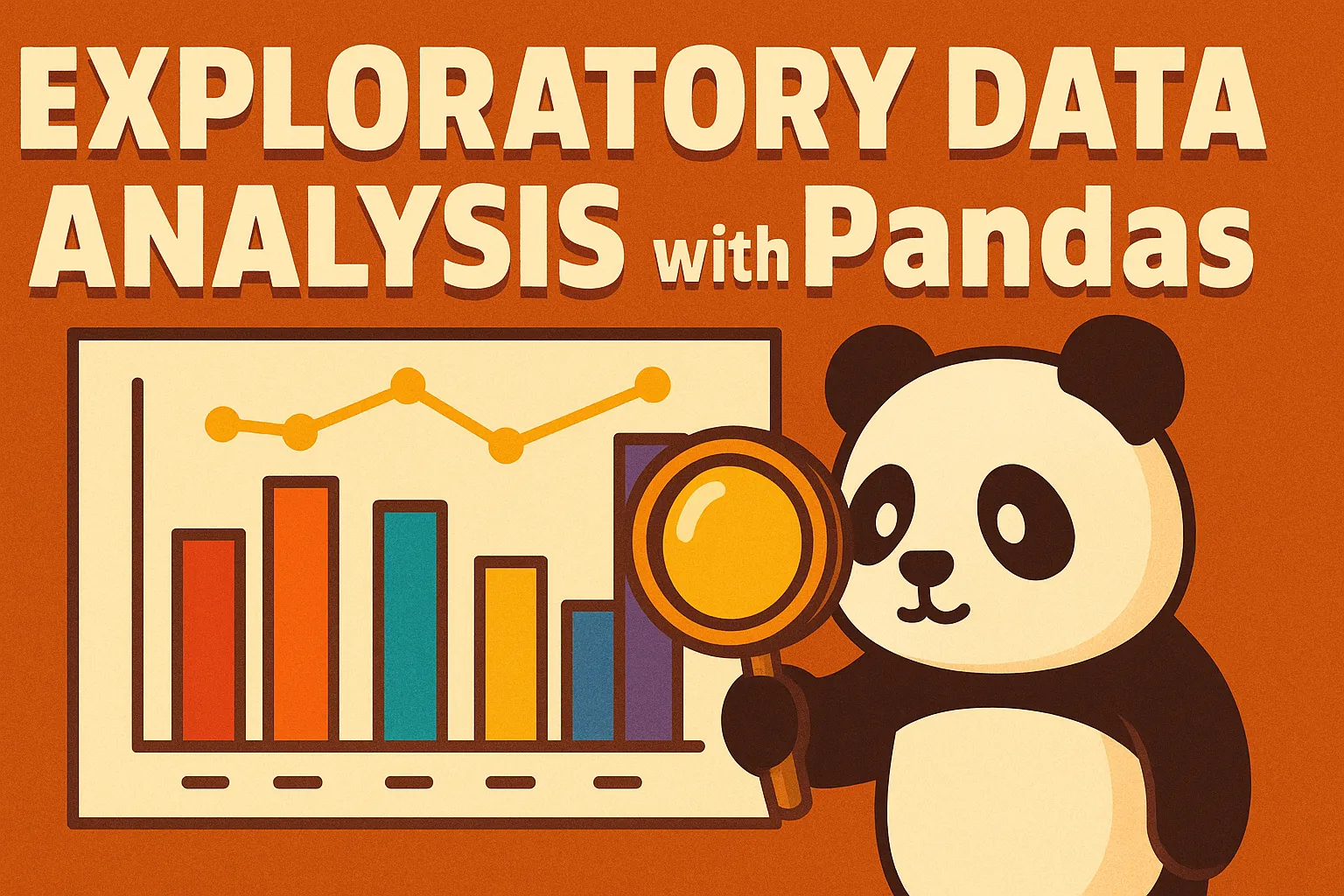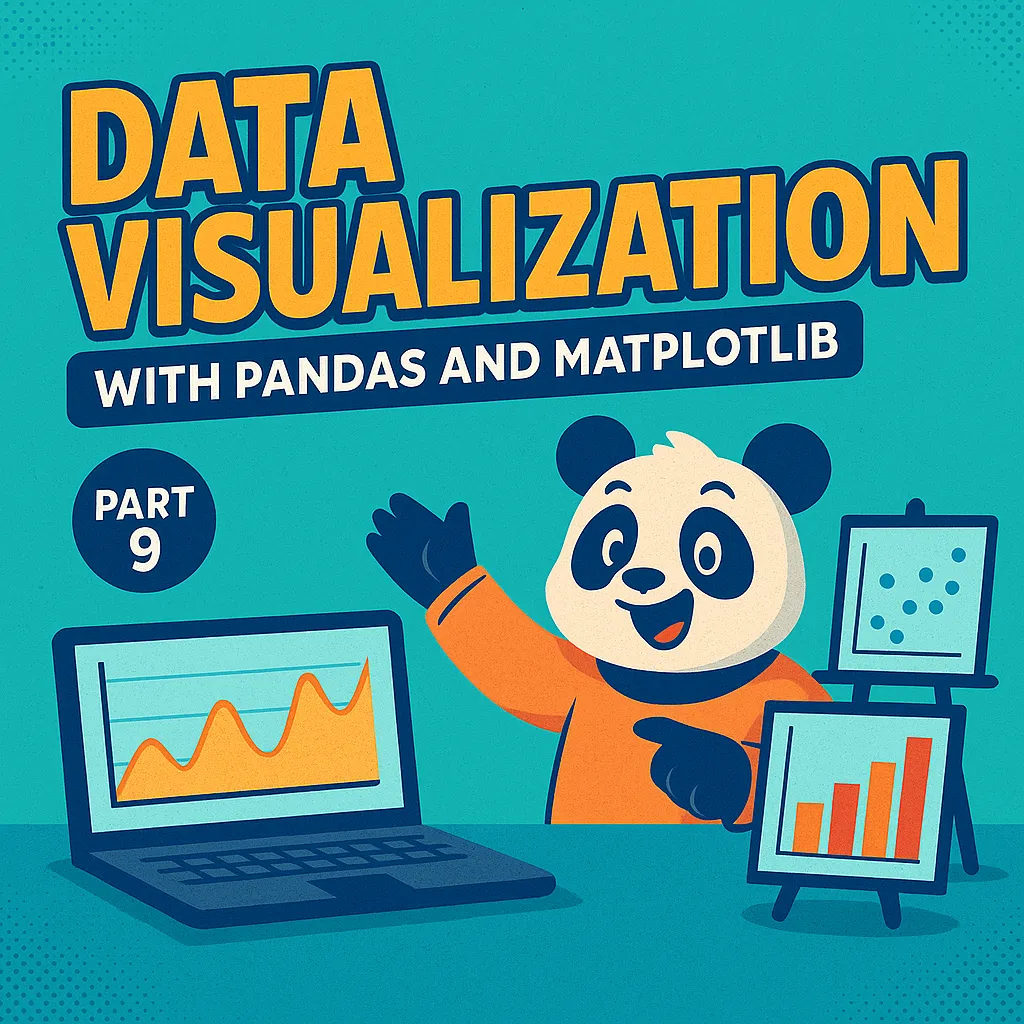
Exploratory Data Analysis (EDA) with Pandas
Written by: Marlon Colca
Posted on 23 May 2025 - 4 months ago
python pandas analytics
Learn how to explore and understand your dataset using Pandas, identifying trends, patterns, and potential issues in your data.
- 01
- 02
- 03
- 04
- 05
- 06
- 07
- 08Exploratory Data Analysis (EDA) with Pandas
- 09
- 10
- csvPrices sample
- csvPrices with missing data
- csvPrices with sales
🧠 Part 8: Exploratory Data Analysis (EDA) with Pandas
Welcome back! In the previous part, we handled missing data effectively.
Now it’s time to dive deeper into our dataset and perform Exploratory Data Analysis (EDA).
EDA helps us uncover hidden patterns, detect anomalies, and test hypotheses using simple Pandas techniques.
🔍 Dataset Setup
We’ll use the same dataset as before, but now with missing values handled:
import pandas as pd
df = pd.read_csv("prices_with_missing_data.csv")
# Optionally fill missing values
df['quantity_sold'] = df['quantity_sold'].fillna(0)
df['price'] = df['price'].fillna(df['price'].mean())
df['brand'] = df['brand'].fillna("Unknown")📈 1. General Overview
print(df.head())
print(df.info())
print(df.describe())df.info()tells us about data types and non-null counts.df.describe()gives statistical summaries of numeric columns.
🔢 2. Value Counts & Uniqueness
How many brands and categories do we have?
print(df['brand'].value_counts())
print(df['category'].value_counts())
print(df['product_name'].nunique(), "unique products")📊 3. Grouped Aggregations
Let’s analyze average sales and prices per category:
category_summary = df.groupby("category").agg({
"price": "mean",
"quantity_sold": "sum"
}).sort_values("quantity_sold", ascending=False)
print(category_summary)📅 4. Time-based Insights
We can parse the date column and check sales over time:
df["date"] = pd.to_datetime(df["date"])
# Daily total quantity sold
daily_sales = df.groupby("date")["quantity_sold"].sum()
print(daily_sales.tail())
# Weekly average sales
weekly_avg = df.resample("W", on="date")["quantity_sold"].mean()
print(weekly_avg.tail())📉 5. Detecting Outliers
Let’s find unusually high-priced items:
high_prices = df[df["price"] > df["price"].quantile(0.95)]
print(high_prices[["product_name", "price"]])🧪 6. Correlations
Do price and quantity_sold correlate?
correlation = df[["price", "quantity_sold"]].corr()
print(correlation)Hint: A strong negative correlation might suggest price sensitivity.
🧼 7. Exporting Your Clean EDA Results
You can save your grouped summaries for reporting:
category_summary.to_csv("category_summary.csv")✅ Summary
In this part we:
- Explored structure and statistics of our dataset.
- Grouped and aggregated data for insights.
- Identified outliers and trends.
- Prepared the ground for future visualizations.
Coming next: Part 9 – Data Visualization with Matplotlib & Pandas!
Stay curious and keep exploring 🧠📊
🔜 Coming up next

Visualization with Pandas
In this post, we’ll learn how to create quick and effective visualizations using Pandas (which uses Matplotlib under the hood)
26 May 2025 - 4 months ago